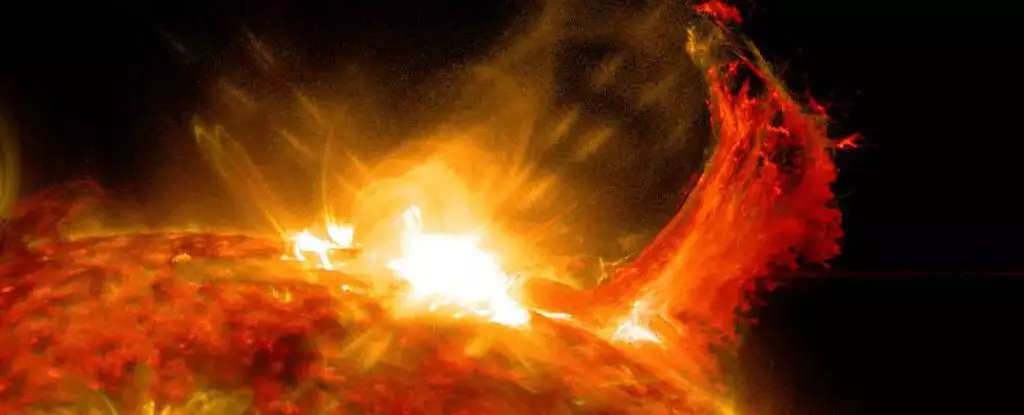Understanding the celestial king of our solar system, the Sun, reveals a dynamic and tumultuous facet that belies its constant radiance. Far from being a stable source of light and warmth, the Sun is a cauldron of continuous, violent activity. Various phenomena, including coronal mass ejections (CMEs) and solar flares, burst from its surface, challenging our understanding and preparedness for potential catastrophes. While the Sun’s normal activities may seem benign, recent research underscores a critical concern: the potential frequency and consequences of rare but devastating superflares.
An extensive analysis of 56,400 Sun-like stars has intensified fears regarding the frequency of superflares in our own Sun. Estimates have historically ranged from once in a century to once in a millennium; however, the new research indicates that a superflare may occur as often as every 100 years. This statistic challenges previous understandings and raises alarm bells because the repercussions could be far-reaching, affecting everything from communication systems to global infrastructure.
The Carrington Event of 1859 serves as a haunting historical example. This solar superstorm, relatively mild at 1% of the energy a superflare can release, devastated the telegraph systems of the time, showcasing how vulnerable we are to solar activity. What’s alarming is the absence of a comprehensive understanding of when these powerful explosions might occur or how to effectively predict them.
The quest to quantify solar flares remains intricate and frustratingly opaque. Traditional methods to assess historical solar activity include studying tree rings, which show a spike in carbon-14 during notable solar flares. These spikes, however, might offer only a fragment of the complete picture. The complexity increases when scientists analyze the activity of other G-type yellow dwarf stars, similar to the Sun. They aim to discern the frequency of their flares while grappling with the difficulties in measuring stellar rotation rates, which are potentially linked to increased flare activity.
To address this data deficiency, researchers, including astronomers like Valeriy Vasilyev from the Max Planck Institute, employed a broader strategy. They focused on a sample of stars with similar characteristics—temperature and brightness—while ignoring the complexities posed by rotation data. By casting a wider net, they could accumulate enough data to substantiate their findings: an alarming superflare rate of once every century.
Despite the growing body of research on solar activity, the mechanics behind superflares remain shrouded in uncertainty. Astrophysicist Ilya Usoskin highlights the ambiguity surrounding the correlation between superflares and coronal mass ejections. Are these massive energy bursts always accompanied by CMEs? The answer eludes scientists, necessitating further inquiry into the relationship between these phenomena and extreme solar events.
Solar flares alone bring their own set of disruptions—especially during high-frequency radio communications, where they can modify the ionosphere, affecting signal clarity. However, the combination of a flare and a corresponding CME can present even more severe hazards. Historical instances of geomagnetic storms, such as the Carrington Event and the 1989 solar storm that blacked out large sections of Quebec, illustrate the potential scale of destruction. These events can overload power grids and even spark fires, calling into question our current infrastructure’s resilience against solar onslaughts.
As scientists continue to decode the Sun’s mysterious behavior, the essential question looms: how can humanity shield itself against these potentially catastrophic events? Accurate forecasting is crucial in developing defenses against impending geomagnetic storms. The current research emphasizes the urgency of understanding solar dynamics better, enabling more robust predictive models and preparedness strategies.
In the face of this celestial menace, scientists like Natalie Krivova advocate for a renewed focus on solar research. “The data is a stark reminder that extreme solar events are part of the Sun’s natural repertoire,” she asserts. With the stakes as high as they are, fostering a greater understanding of solar flare mechanisms is no longer a peripheral scientific endeavor; it is a pressing necessity for the future resilience of our planetary civilization.
As we navigate the complexities of solar physics, staying informed and proactive in addressing the threats posed by our star will be paramount. As our technological dependency grows, so does the need for vigilance against the Sun’s capacity to unleash chaos. The Sun may seem calm on the surface, but its hidden fury could one day powerfully reshape our world.


Leave a Reply